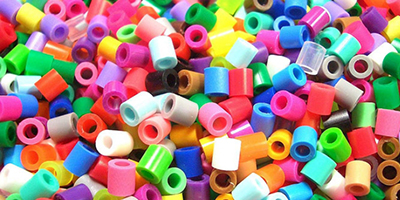What is plastic?
Plastics are real materials that were created by humans for the first time. The structure of plastic materials is based on chemical elements such as carbon, hydrogen, oxygen, nitrogen, chlorine and sulfur. These elements are obtained from air, water, gas, oil, coal and even from living plants.
It was the creative thought of man and his long-standing desire to be able to prepare and purify these elements and then mix and combine them through various chemical reactions to create almost endless and numerous strings of element combinations. produce various and use it in a wide range of macromolecules or polymers, which are known as plastic today.
PET bottle mold
There are plastics whose properties have been significantly improved over existing materials, while other polymers can only be described as unique and unique materials with exceptional properties that were previously completely unknown to the industrial world. .
There are plastics that melt at 200 F, while other plastic materials have been developed that can withstand temperatures of 1000 F. Protectors or heat shields that protect astronauts during space travel are plastic materials that are made based on conventional technology known as ablative plastics. Polymers have been designed and developed that are used to make shields that can stop a bullet.
Flexible plastic films are made that can be used repeatedly in the protection and storage of grains and other foodstuffs as well as grocery items and products.
Also, rigid and hard plastics are made, whose mechanical strength and hardness are enough to maintain and support the beams of buildings in a building.
PET bottle mold
Plastics are among the best electrical insulating materials known to mankind so far. In any case, we can find another type of special plastic materials that are able to conduct electricity. Composite materials or plastic composite materials. (Plastic Composite Materials) have been used as golf clubs, while other flexible polymers have been used as upholstery materials for sofas or fabric in the furniture industry.
Transparent and impact-resistant polymers have also been made, which are used as snow wipers and protection against the wind, i.e. windshields and windshields on the driver or pilot in airplanes, cars, and doors or shower curtains in bathrooms. Also, transparent packaging materials have been prepared, which are used for the special protection of customers.
The number of times it is possible to change, forward, transform or permute in combining chemical elements to create and produce plastics with different properties is almost endless. The existence of such diversity has led to plastics being used for a wide range of end uses and products. be diverse, very practical and usable.
This diversity in the chemical structure of polymers has made it impossible to rely on them as a single family of materials that can cover an unlimited range of properties, characteristics and transformation processes, in other words, only one It is not a specific group of macromolecules that are used in the manufacture of plastics, but considering the special and final use that is expected from the plastic material, it may be necessary to use a variety of different groups of polymers in order to achieve the desired properties in A piece of plastic arrived. That is, all different types of plastics cannot be placed in a single group.
The beginning and historical origin of industrial polymers, plastic materials, have played an important role in the development of today's new civilization. These types of polymers have a wide range of properties and automation of the process, while they bring many financial benefits in terms of price and cost. It will be very surprising to understand this, if you know that a little before a century ago, there were none of the types of plastics that are seen all over the world today.
The history and beginning of the plastic industry goes back to before 1868, when John Wesley Hyatt mixed proxylin obtained from flax and nitric acid with camphor to create a completely different product. He created a new called celluloid.
In fact, the expansion and development of celluloid was used in response to the competition between different companies for the manufacture and production of billiard balls. According to the need created for a new material and a production method for such an application, celluloid was developed and thus the plastic industry was born! Celluloid quickly went to other markets and found new uses, such as: men's shirt collars, sleeves and front of men's shirts, doll seats, buttons and window curtains used in early cars.
However, the most important use of celluloid was the first photographic film, which was used by Eastmen to produce motion picture film in 1882. Today, this substance is still used in the motion picture industry under the chemical name of cellulose nitrate.
The plastic industry faced its second major leap, forty-one years later, when Dr. Leohendrik Balkland introduced the first phenol formaldehyde (PF), known as "phenolic" to the world in 1909. This material was the first plastic material that succeeded in obtaining acceptance

